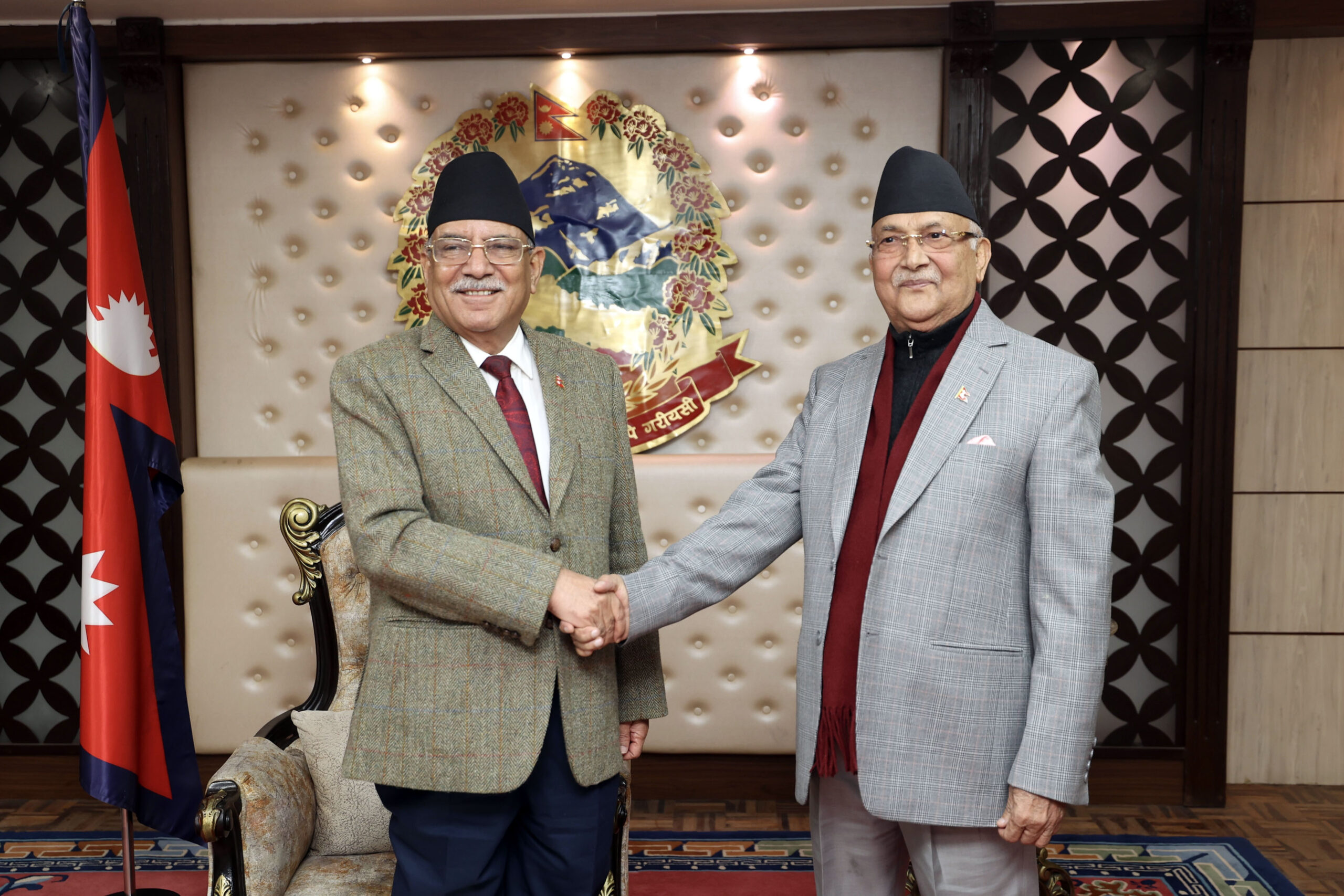0%

Maoist Chairman Pushpa Kamal Dahal Prachanda (L) and CPN-UML Chairman KP Oli/File Photo
KATHMANDU: The political landscape in Nepal is once again in a state of flux as leaders from the ruling Maoist Center and the CPN-UML contemplate potential alliance and reunification.
Maoist leader Barsaman Pun, who is seen as close to Maoist Chairman and Prime Minister Pushpa Kamal Dahal Prachanda, has hinted at the possibility of renewed collaboration.
The history of the UML and Maoist Center has witnessed moments of unity and division, and their leaders are now exploring the prospect of reuniting.
As pressure mounts within the Nepali Congress, the country’s largest ruling coalition party, to find alternatives to the Dahal-led government, Pun has raised the possibility of cooperation with the UML once again.
In his latest statement, Pun even suggested the potential reunification of the two parties, emphasizing the importance of acknowledging the historical contributions of the Maoist movement.
“We formed the Nepal Communist Party. Although it could not be sustained, sooner or later, there is a possibility that the communist parties will come together again to form a Front, or even party unity, or a joint government,” stated Pun.
Meanwhile, NC leaders are not inclined to seek an alternative to Dahal’s government. They maintain that the understanding with the Maoist Center will not be easily severed.
Recent events indicate that neighboring countries, particularly China, are actively influencing Nepal’s political landscape.
China has been working to unite Nepal’s Left forces to prevent fragmentation. There is a growing awareness within the Maoist Center of the need to focus on upcoming elections and promote communist unity.
The emergence of new parties has made it challenging for older parties to compete independently in the upcoming elections.
Pressure is mounting within the Nepali Congress to contest the elections on its own.
While Maoist leaders engage in diplomatic visits to China, signifying their efforts towards communist unity, Pun’s statement is under close scrutiny in political circles.
Prime Minister Dahal’s return from a visit to China and high-level interactions between UML leaders and Chinese officials suggest that China is actively driving the initiative for communist unity in Nepal.
However, some Maoist leaders emphasize that the decision regarding communist unity lies with Nepal’s political parties and is not dictated by external forces.
On the other hand, the UML appears to be strategically exploiting divisions within the coalition.
Amid these developments, it remains uncertain whether the communist parties will reunify, or if Nepal’s political landscape will continue to evolve, with external influences playing a significant role in shaping its future.
Even the UML is not averse to the idea of cooperating with the Maoists. UML leaders believe that the possibility of unity or an alliance with the Maoists is feasible, considering that politics is a “game of possibilities.”
They do not rule out the potential for alliance or unity with the Maoist Center.
Meanwhile, NC leaders are not inclined to seek an alternative to Dahal’s government. They maintain that the understanding with the Maoist Center will not be easily severed.